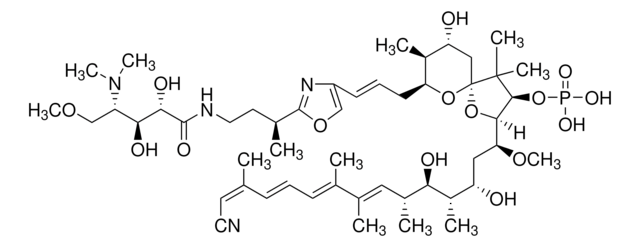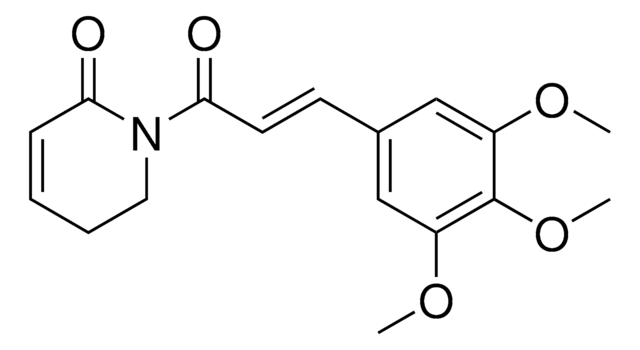Selecione um tamanho
Selecione um tamanho
About This Item
Produtos recomendados
Ensaio
≥98% (HPLC)
Formulário
powder
pf
115-116 °C (lit.)
temperatura de armazenamento
2-8°C
cadeia de caracteres SMILES
C/C(CC[C@]12[H])=C/CC[C@]3(C)[C@H](O3)[C@]1(OC(C2=C)=O)[H]
InChI
1S/C15H20O3/c1-9-5-4-8-15(3)13(18-15)12-11(7-6-9)10(2)14(16)17-12/h5,11-13H,2,4,6-8H2,1,3H3/b9-5-/t11-,12-,13+,15+/m0/s1
chave InChI
KTEXNACQROZXEV-ZRPLFPEYSA-N
Informações sobre genes
human ... ELA2(1991) , IKBKG(8517) , NFKB1(4790) , NKAP(79576) , NKRF(55922)
Procurando produtos similares? Visita Guia de comparação de produtos
Categorias relacionadas
Aplicação
- in the crystallization with vasohibin 1 (VASH1) to study tubulin detyrosination inhibition[1]
- as an inhibitor of nuclear factor κ-light-chain-enhancer of activated B cells (NF-κB) and signal transduction and activation of transcription (STAT) inhibitor to study its effects on the cytoadhesion of CD36-binding Plasmodium falciparum-infected erythrocytes (IECD36)[2]
- as a lipophilic agent to study its effects on the production of interleukin?13 and interferon?γ by peripheral blood-derived CD8+ T cells[3]
Ações bioquímicas/fisiológicas
Outras notas
Palavra indicadora
Warning
Frases de perigo
Declarações de precaução
Classificações de perigo
Skin Sens. 1
Código de classe de armazenamento
11 - Combustible Solids
Classe de risco de água (WGK)
WGK 3
Ponto de fulgor (°F)
Not applicable
Ponto de fulgor (°C)
Not applicable
Equipamento de proteção individual
Eyeshields, Gloves, type N95 (US)
Escolha uma das versões mais recentes:
Já possui este produto?
Encontre a documentação dos produtos que você adquiriu recentemente na biblioteca de documentos.
Os clientes também visualizaram
Artigos
Chronic inflammation is an underlying factor in the development and progression of many of the chronic diseases of aging, such as arthritis, atherosclerosis, diabetes, and cancer.
Cancer stem cell media, spheroid plates and cancer stem cell markers to culture and characterize CSC populations.
Active Filters
Nossa equipe de cientistas tem experiência em todas as áreas de pesquisa, incluindo Life Sciences, ciência de materiais, síntese química, cromatografia, química analítica e muitas outras.
Entre em contato com a assistência técnica















